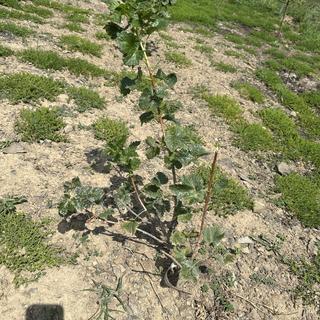Description
A gooseberry and currant cross! The rich berry taste is reminiscent of gooseberry with a kiss of black currant. Deep-red, almost-black fruit is high in vitamin C and forms in large clusters, ideal for juices, jams and jellies, and fresh-eating. Cold-hardy plants are long-lived, thornless, and productive once established. Debuted in 1977. The name “jostaberry” itself is a combination of the German word for blackcurrant, “Johannisbeere” and for gooseberry, “Stachelbeere”. Disease-resistant to American gooseberry mildew, black currant leaf spot, white pine blister rust, and big bud gall mite. Ripens in July. Self-pollinating. (Ribes × nidigrolaria)
Jostaberries are available only during the spring ordering season.
Characteristics
| Bloom Color | Purple, Red |
| Fruit Color | Red |
| Fruit Size | Medium |
| Hardiness Zone Range | 4 - 7 |
| Pollination | Self-Pollinating |
| Ripens/Harvest | July |
| Shade/Sun | Partial Shade - Full Sun |
| Soil Composition | Loamy, Sandy |
| Soil Moisture | Well Drained - Average Moistness |
| Soil pH Level | 6.0 - 6.5 |
| Taste | Sweet, Tangy |
| Texture | Firm |
| Years to Bear | 2 - 3 |
Zone Compatibility
Pollination
This variety is self pollinating.
Tools & Supplies
Planting & Care
Learn all about how to grow hybrid berry plants in The Growing Guide. An entire section of our website dedicated to your growing success.











Never heard of them, will be a great add to my orchard and berry areas that has so many varieties each unique and wonderful.
I love gooseberries but hate picking them. These appear to do well and have less thorns making picking easier.
Something new
Looking for a black currant bush. Decided to try this.